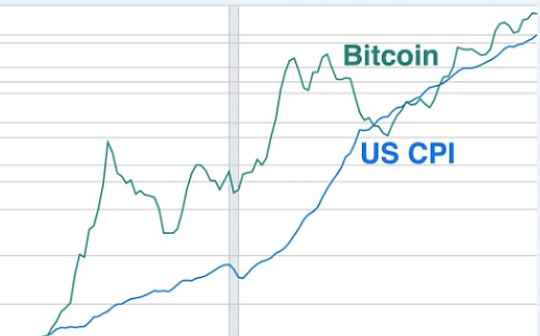
The Perpetual Contract Exchange Track is undergoing a technological revolution.FollowHyperliquidBehind the igniting of the entire DeFi derivatives market and unveiling a new prelude to the industry, CZ has recently come to the scene and called for orders.AsterThe sudden rise of force even overshadowed Hyperliquid, adding a second to the craze.And besides the halo of these two star projects, one isLighterNew projects are also quietly rising. With its unique zero-fee model and ZK Rollup technology architecture, it has attracted more than 56,000 users and $700 million in just a few months, which has also attracted great attention from the market.What is the most outstanding thing about this project, known as the “next Hyperliquid”?
Core features
ZK architecture optimized for transactions
Traditional CEXs are executed quickly, but are centralized and opaque, making it easy to cause “black box operations” to harm the interests of traders.Although DEX puts all operations on the chain, making the exchange behavior transparent and verifiable, it leads to slow transaction matching and poor user trading experience.To solve this problem, different technical schools emerged from DEX:
-
Take dYdX as an example, all are “Off-chain matching, on-chain settlement“, although the order matching and execution speed has been improved, the off-chain part is still opaque and has degenerated back to the CEX state.
-
Hyperliquid is the first DEX on the entire chain to be successfully used on a large scale.Hyperliquid is not only a simple DEX, but a Layer1 specially customized for transactions.Only by comprehensively optimizing the execution layer and consensus layer can Hyperliquid fully put the exchange functions on the chain while maintaining high throughput to meet the real-time requirements of professional trading teams such as high-frequency trading and market makers.
andLighter takes the third path.Lighter is a zk-rollup under the Ethereum ecosystem. Its exchange functions (such as order matching and forced closing) are completed in a single Sequencer of Layer2. It is the same as CEX, with a fast speed but opaque one.To solve its shortcomings, Lighter ensures fairness in transactions through ZK Proof.The calculation results of each matchmaking and forced closing will be generated and submitted to Layer1 for verification.This means: all matchmaking strictly follows the principle of price time priority, and it is impossible to conduct undercover operations or line-up transactions (theoretically, this should be the case, but what about the actual situation? I will talk about this later).So, Lighter is walkingCentralized execution, decentralized verification”The third path to achieve a balance between execution efficiency and trust restoration.
However, the above solution also has its disadvantages. Traditional ZK Rollup requires handling various complex smart contract operations, and the speed of generating proofs is often very slow, which cannot meet the real-time needs of professional trading teams.Lighter’s biggest highlight is its self-developed ZK Rollup technology solution.Unlike the general-purpose ZK Rollup on the market, Lighter has made in-depth optimizations for order book transactions.andBecause only by focusing on matching logic, Lighter can greatly simplify the complexity of zero-knowledge proof, realize sub-second generation of ZK Proof to meet the requirements of professional trading teams for real-time performance.
Double-layer architecture security guarantee
Lighter’s core architecture adopts “Asset custody in Layer1, transaction execution in Layer2“Design idea. Specifically:
-
Layer1 (Ethereum main network): Responsible for fund custody, and all user assets are stored in audited smart contracts.
-
Layer2 (Lighter Network): Responsible for high-speed matching and settlement, and the final account status is released on L1 in a compressed diff form.
The biggest advantage of this design is safety.Even if Lighter’s Layer2 system completely crashes, the user’s funds are still safely saved on the Ethereum main network and can be retrieved through the emergency exit mechanism.
LLP dual-purpose innovation
Lighter has a public liquidity pool LLP (similar to insurance funds) for undertaking losses through positions and providing market-making liquidity to the platform.Users can deposit funds into LLP to contribute liquidity to Lighter while enjoying market making benefits.This design is to imitate Hyperliquid’s HLP mechanism.
In the future version, the funds deposited by users in LLP will not only obtain market-making benefits as LPs,It is also planned to allow LP shares to participate in transactions as margin to achieve dual utilization of funds.This design prevents funds from being idle and improves capital efficiency (similar to Aster’s USDF and other income collateral models). However, this function has not yet been launched, and risk control needs to be fully considered during the implementation process. In the following chapter, the author will discuss it in detail.
Zero fee strategy
Lighter adopts a bold business model in the DeFi field—Completely waive transaction fees for ordinary users.Whether it is a placing order (Maker) or a placing order (Taker), users can enjoy zero-cost transactions.This is undoubtedly a huge attraction in the DeFi world where the handling fee is almost a few ten thousand.
So how does the platform maintain operations and make profits?The answer is “paid API model”.
-
Ordinary users: Both placing orders and eating orders are free, but there is a delay of 200-300 milliseconds for matching.
-
Premium Account (Premium): 0.002% will be charged for placing an order, and 0.02% will be charged for placing an order.butThe matching delay is significantly reduced: Cancel the order for 0 milliseconds, and 150 milliseconds for order for 150 milliseconds.
Professional traders and market makers are willing to pay these fees for lower latency and better service quality.In addition, the platform also earns revenue through liquidation fees (up to 1%) and other value-added services.
But don’t forget”Free is the most expensive thing in the world“, Lighter’s free strategy reminds people of Robinhood’s **”Order flow payment” (PFOF)** gameplay. In addition, zero handling fees also encourage part of “Wash Trading”. The author will discuss the risks in this regard in the following article.
Project status and data
Development progress
-
Lighter started testing at the end of 2023, and ran an earlier version in 2024 (called “zkLighter” at the time) and started private testing in early 2025.As of now (September 2025), the platform is still in the invitation-based test network/closed testing stage and has not been fully open to public use. The specific main network online and issuance time has not been officially announced.
-
Since the main network has not yet been launched,Lighter core code is not fully open source yet, but the smart contract has passed the audit (ZK circuit is reviewed by ZKSecurity), and the code details may be disclosed synchronously when the main network is released in the future for community supervision.
Growth data performance
Judging from the data performance, Lighter’s growth is indeed impressive:
-
User Scale: As of September 2025, the number of registered users has exceeded 56,000.
-
Funding scale: Total lock value (TVL) soared from $2.5 million in March this year to more than $700 million, a 280-fold increase.
-
Trading activity: The average daily trading volume climbed from hundreds of millions of dollars in the summer to about US$8 billion in the recent period, and even reached US$18.9 billion on September 25, 2025, quickly approaching Hyperliquid’s market share.Recently, its daily trading volume has even surpassed Hyperliquid.

But on the other hand, Lighter’s total open position contract (Open Interest) is relatively low.Lighter’s OI is currently about $1.3 billion, an order of magnitude less than Hyperliquid’s $13 billion, and also lower than Aster’s recent $1.5 billion level.High trading volume and low OI suggest that the two newly popular platforms of Lighter and Aster have a large number of short-term and frequent counter-trading behaviors. The author will analyze this in the risk section later.

Competitive Comparative Analysis
As a new generation of ZK architecture sustainable DEX, Lighter is often compared with Hyperliquid (the first star project to ignite the perps craze) and Aster (the rising star backed by Binance Ecosystem).Below, we will compare Lighter with Hyperliquid and Aster horizontally from the aspects of decentralization, performance throughput, product functions, ecological integration, etc. to analyze their respective advantages and disadvantages.
Underlying architecture and decentralization
-
Hyperliquid: The customized Layer1 has multiple verification nodes, which is theoretically decentralized.However, due to the small number of nodes and all controlled by the team, the actual degree of decentralization is limited.
-
Aster: Core matching is implemented off-chain and is more centralized.
-
Lighter: As a Rollup, only a single Sequencer is responsible for matching and execution layer is centralized, but verifying ZK Proof consumes little resources and lightweight nodes can also verify, so the verification process is highly decentralized, thus making up for the shortcomings of “centralized execution”.In addition, the asset ledgers are all on the Ethereum main network. Even if the Lighter team disappears, users are allowed to retrieve funds independently, and the asset security is fully guaranteed.
Performance and trading experience
-
Hyperliquid: Process hundreds of thousands of orders per second, and remain stable in extreme market conditions, without blockage or downtime.
-
Lighter: Achieve millisecond matching, zero-knowledge proof generation, and experience close to centralized exchanges.Sex can be used, but in extreme cases there will be slight lag.
-
Aster: Due to the 3-second block time of BNB chain, the performance is relatively weak.To make up for the performance gap, ordinary users can make one-click transactions with their automatic market making pool, which is equivalent to directly consuming the liquidity of the AMM pool, saving them from waiting for orders.In the future, Aster plans to launch its own ZK Rollup chain to improve performance and privacy, which will make its future architecture more similar to Lighter.
Product functions and innovation
-
Hyperliquid: As a pioneer, the functions are relatively balanced and mature.There are both spot transactions and perpetual contract transactions.HIP-3 allows users to create contract markets on their own, which will surely promote the transaction of RWA products such as the US stock market on Hyperliquid.HIP-4 proposes to launch a “predictive market” on Hyperliquid.
-
Aster: Leverage Binance’s influence to quickly acquire customers.There are three innovations in terms of functions: multi-chain liquidity sharing, 1001 times high leverage, and planned dark pool trading to attract high-risk preference speculators.In addition, Aster has launched perpetual trading of US stocks, including stock contracts such as Tesla and Apple, allowing users to trade US stock prices 24/7.
-
Lighter: It is used as Ethereum Layer2,It is expected to achieve good compatibility with the Ethereum main network and other Rollup ecosystems, for example, it directly supports users to use any mainstream Ethereum assets as margin, and can connect with wallets and strategy protocols on Ethereum to give full play to the combination advantages of Ethereum DeFi Lego.In addition, the dual-use LLP margin function in Lighter planning is a potential innovation: it allows liquidity providers to earn market-making income while also gaining opportunities to participate in transactions, which is equivalent to giving LP the attributes of a revenue-based collateral.
Liquidity depth and transaction costs
-
HyperliquidWith huge market maker funds (HLP pool once reached $1.5 billion + funds) and rich participation from institutional market makers, the buying and selling depth of its mainstream trading pairs even surpassed some second-tier CEXs, and the trading slippage and implicit spreads were extremely small.Although the handling fee is not zero, the rates of 0.01% placing orders and 0.03-0.05% placing orders are already very cheap in DEX.Overall, Hyperliquid provides a low-cost environment for large-cap traders to approach CEX.
-
LighterIt is taking the route of zero handling fees for a larger spread: ordinary users do not need to pay handling fees, and the surface cost is lower, but market makers will increase the trading quotation gap in order to make profits to cover costs.Therefore, the spread of the actual transaction of Lighter users may be slightly higher than that of Hyperliquid.Especially for niche trading pairs, because Lighter still lacks extensive market makers to participate, the liquidity depth is relatively insufficient, and some users have reported that Lighter’s trading thickness on some altcoin lags behind Hyperliquid.
-
AsterThe situation is more complicated: its normal mode provides liquidity through the ALP automatic market making pool, and the depth depends on the asset scale and algorithm in the pool; the Pro model is due to multiple chain reasons, and market makers are dispersed, and Binance market makers are mostly concentrated on the BNB chain, resulting in the average depth of non-BNB chain targets.
Valuation Analysis
Valuation based on revenue forecasts:
Hyperliquid reference:
-
The daily income is more than US$3 million, and in this way, the annualized income is about US$1.1 to US$1.2 billion.
-
According to the current HYPE of about 45 billion FDV, about 40 times the PE.
Lighter Prediction:
-
Lighter’s recent trading volume exceeded $8 billion.However, considering that Lighter’s current momentum may not last long, and the market generally believes that these trading volumes contain too much Wash Trading, the author is cautiously optimistic that the future stable daily trading volume is US$4 billion.
-
Lighter currently does not charge handling fees for ordinary transactions, and its revenue mainly comes from advanced account rates.Assuming 20% of transactions are from paid users every day, and the average rate is 0.01%, annualized revenue is about 4 billion * 20% * 0.01% * 365 = approximately $30 million.
-
Use 40 times PE similar to Hyperliquid,The author estimates that Lighter’s FDV is about US$1.2 billion.
Currently, Polymarket predicts that the market will give an 80% probability that Lighter will be listed at a valuation of more than US$2 billion, reflecting the market’s optimism about Lighter.This high premium reflects the market’s popularity with the high-performance Orderbook DEX track.
Risk Analysis
The business model is doubtful
Lighter currently waives user transaction fees, which has indeed attracted a large number of users in the early stage, but in the long run, where does the platform’s profit come from?Whose money will you make?
The “free fee” strategy reminds people of traditional zero-commission platforms such as Robinhood.Robinhood is turning its revenue stream to “order sales”, which means charging market makers/high-frequency trading institutions to get transactions at favorable prices.This is actually passing the cost to spread: retail investors do not pay the handling fee on the surface, but the transaction may be traded on the worse bid-ask spread and are “eat the spread” by market makers..The founder of Lighter did not hide his recognition of the Robinhood model in the podcast, believing that DeFi can learn this idea of ”the wool comes from the pig and let the cow pay for it.”However, the trader structure of the crypto market is different from that of the US stock market – crypto users are relatively niche and professional, and are more sensitive to spreads, otherwise there would be no technological migration from vAMM to CLOB model.If the Lighter zero rate causes the spread to be significantly larger than the competitors, experienced traders will notice and lose it.
In addition, since high-speed API payment is Lighter’s main source of revenue, Lighter should have optimized the experience of this part of users.However, some people in the community reported that Lighter is slow to open to external interfaces, lacks API documents, and poor docking experience, which makes people question whether the team intends to leave retail order flow to their own internal teams, and does not want external high-frequency trading and market-making teams to share the pie.
Transaction data authenticity issues
There may be a lot of water behind Lighter’s eye-catching data.The most obvious abnormal indicator is the ratio of trading volume to Open Interest.The normal range of this indicator should usually be within 5 times, and the Hyperliquid indicator should be about 0.76 times.Lighter’s indicator is about 27 times, far exceeding the normal level.
This abnormal high turnover rate strongly implies that there are a large number of short-term and frequent counter-trading transactions on the platform.Since Lighter has not issued tokens yet, the main motivation for users to swap high transaction volume is to strive for future airdrop points rankings.Zero handling fees greatly reduce the cost of brushing volume, allowing some users to trade frequently between self-control accounts, creating huge transaction volume without bearing any losses.
According to the on-chain data analysis, many head addresses on Lighter open and close positions thousands of times within the day, but their positions are rarely retained overnight, which is completely in line with the characteristics of hollowing out and pulling out the sheep.
andThe low OI further confirms that there is no large-scale real liquidity added in the market, a large number of transactions may be the left hand to the right hand.Once the airdrop is issued, the transaction volume of this part of “fake prosperity” is likely to disappear quickly, and the platform’s activity is facing a cliff-like decline.
LLP reuse risk
LLP plans to allow users to use their LP shares as collateral to participate in transactions, and this “one-money-for-one” innovation may introduce complex systemic risks.Imagine the following extreme situations:
-
The Lighter team uses the funds in the LLP to make a market.Although there are many professional traders in the Lighter team, there is a risk of “loss” when participating in trading.The market fluctuated violently unilaterally, and LLP suffered significant losses as a competitor, resulting in a decline in the net value of each LLP share.
-
If a user who uses LLP shares as margin fails at the same time, the number of LLP shares in his Margin account must also be deducted.
-
Market making losses and trading losses are superimposed.The net value of LLP and the number of LLPs in Margin accounts decline simultaneously, amplifies the loss of the user’s Margin account, and may trigger a series of forced flats, further aggravate the system instability
Because of this risk, insurance funds on mature platforms such as Hyperliquid operate independently and do not allow users to mortgage and reuse them.To successfully implement this function, Lighter needs to design a complete risk control mechanism, such as limiting the upper limit of LLP mortgage rate, introducing dynamic risk parameter adjustments, and establishing a multi-level risk buffering mechanism.
Team governance uncertainty
The success or failure of an entrepreneurial project is closely related to the team’s quality.Lighter’s founder and team have a strong technical background (founder Vladimir has worked in the fields of AI and FinTech, and its core members include former institutional quantitative engineers, etc.), but there are also some unfavorable rumors in the industry that have caused concerns.
-
Lighter is actually not a new project that became famous overnight. Its predecessor, “zkLighter”, was launched in 2022, but it was not very popular at the beginning. It was not until the end of 2023 that the team accelerated its progress, giving people the feeling of “taking advantage of the trend to catch up on the progress and issuing coins in a hurry to cash out”.
-
There are rumors online that the founder’s unstable style is questioned.According to analytical blogger Julian Kin, Lighter founder Vladimir Novakovski broke his promise of rebate to many partners and broke his promise in the distribution of benefits. There are also rumors that he is obsessed with extravagant lives such as yacht parties in Miami and his private life is not self-disciplined enough.
-
Although many data say Lighter has received investments from a16z and Lightspeed.But there are also information that a16z and Lightspeed invested in Novakovski’s previous project, Lunchclub, an AI social platform.So Novakovski actually used the money from Lunchclub’s main business to do a side business project Lighter. Unexpectedly, “unintentionally planting willows”, Lighter is now popular.If the above statement is true, Lighter has not received endorsement from any well-known institutions, but may be used by investors of the previous project as a channel for cash out and exit.
Summarize
As an emerging force in the perpetual contract DEX track, Lighter has indeed shown many highlights: the innovative ZK Rollup architecture, zero-fee model, rapidly growing users and capital scale.Against the backdrop of the DeFi derivatives market entering a new round of competition, Lighter is undoubtedly a project worthy of attention.
However, we must also look at the risks and challenges in it rationally.The current high transaction volume is likely to contain a large number of false components of airdrops, and the sustainability of the zero-fee model still needs to be verified..More importantly, it is still unknown whether Lighter can build a real moat under the competition of strong opponents such as Hyperliquid and Aster.
For investors, Lighter may either become the next Hyperliquid-style legend or return to dullness after the craze fades away, and its final direction is worth our close attention.






